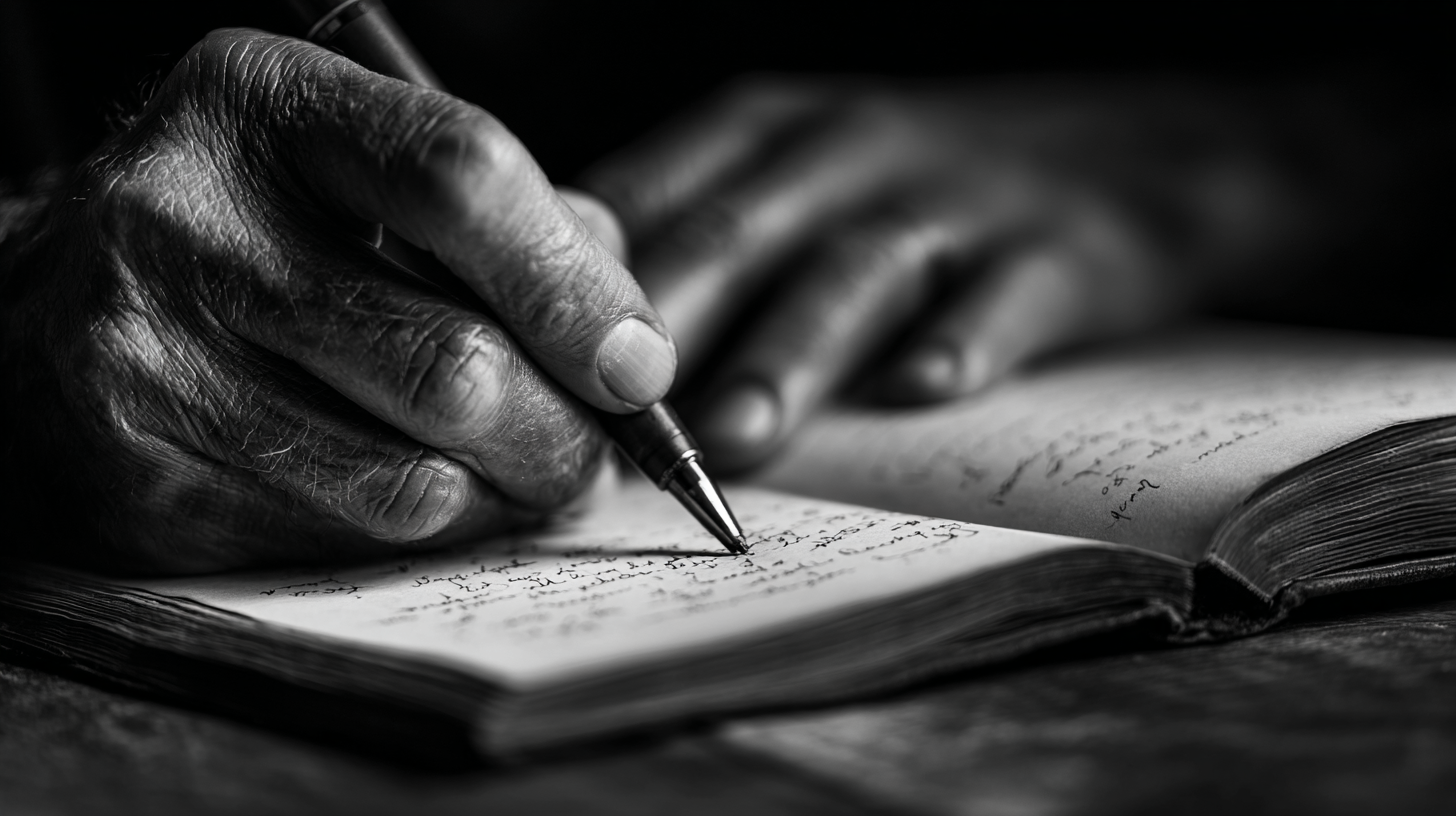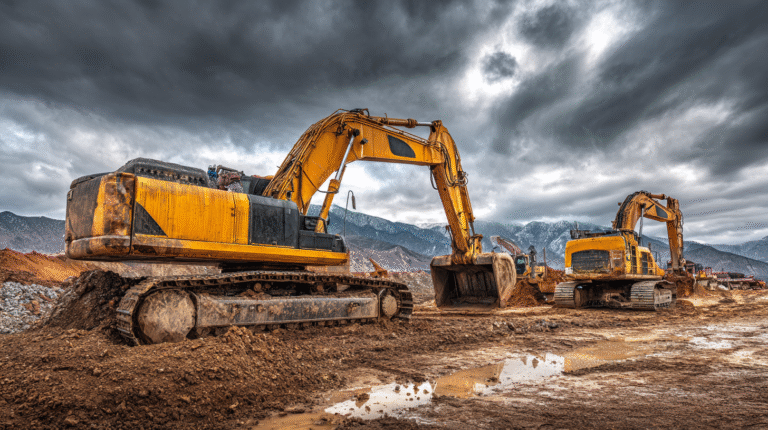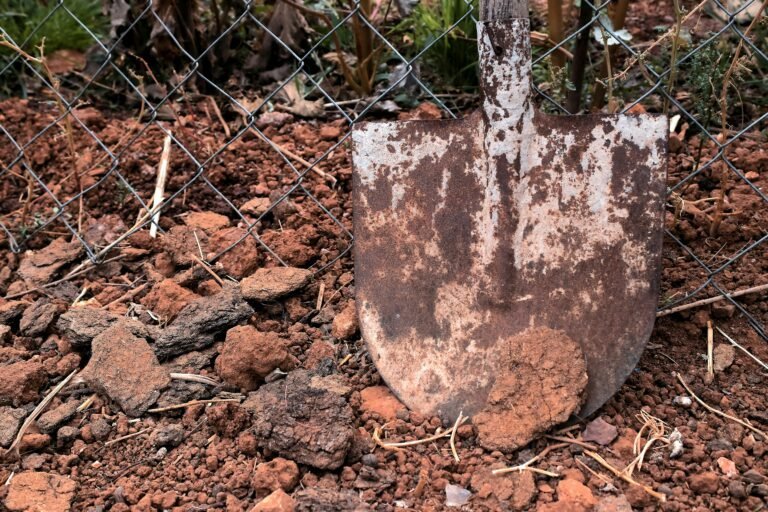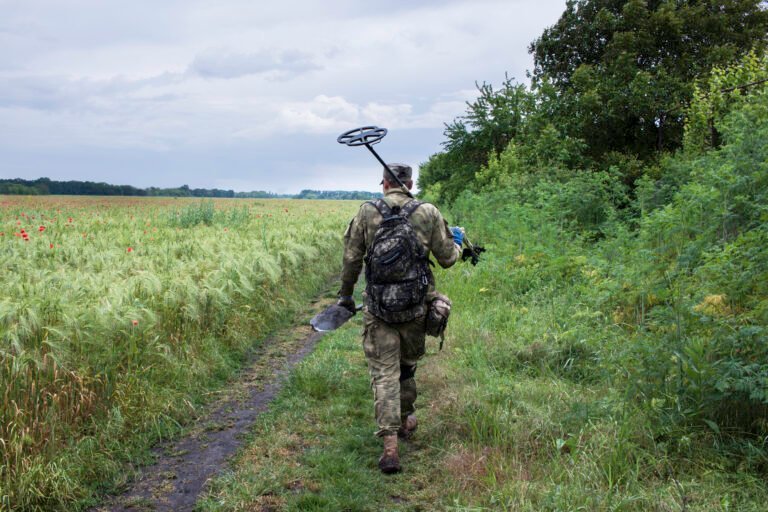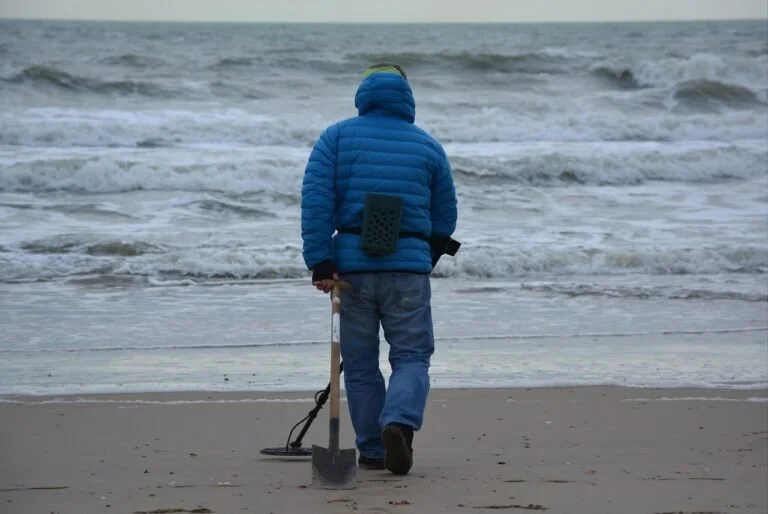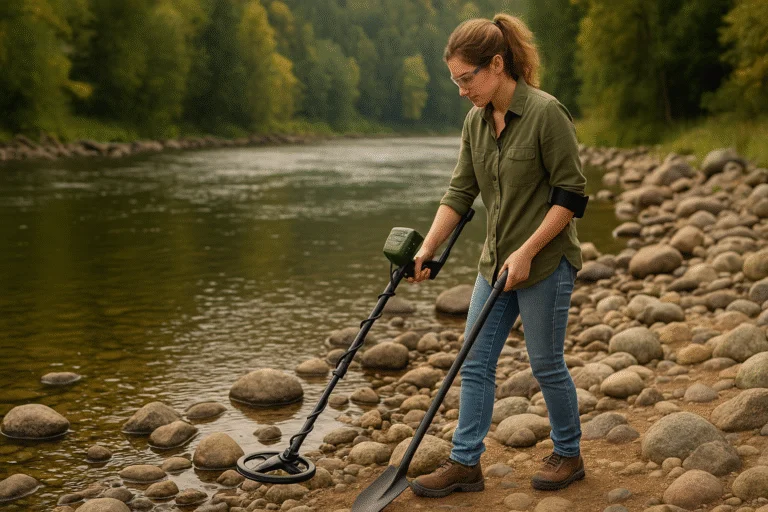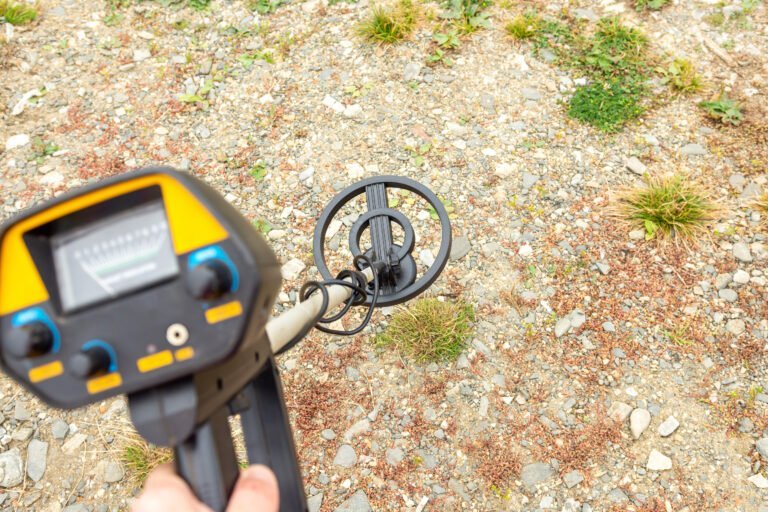Are you a passionate metal detectorist who loves uncovering hidden treasures from the past?
First Posted December 21, 2024 | Last Updated on September 26, 2025 by Ryan ConlonDisclosure: This Post Contains Affiliate Links; We earn a commission on purchases.
Documenting your metal detecting discoveries is not only a way to preserve valuable information but also to contribute to the collective knowledge of the hobby.
By capturing breakthroughs, chronicling groundbreaking revelations, and archiving innovative discoveries, you can leave a lasting legacy and help advance scientific advancements in the field.
In this article, we will provide you with essential tips and techniques for effectively recording and documenting your finds.
From logging research findings to documenting revolutionary advancements, we’ve got you covered.
So, grab your metal detector and let’s dive into the fascinating world of documenting metal detecting discoveries!
Key Takeaways:
- Documenting your metal detecting discoveries is crucial for preserving valuable information and contributing to the collective knowledge of the hobby.
- Keeping a record of your finds helps identify patterns, understand historical significance, and improve overall metal detecting skills.
- Utilize tools like metal detecting logbooks, GPS apps, and database apps to effectively organize and catalog your finds.
- Properly photographing your discoveries provides a visual record, enhancing the documentation process.
- Using records to analyze data and identify trends can help optimize future hunts and improve metal detecting skills.
The Importance of Documenting Metal Detecting Finds
Documenting your metal detecting finds is more than just a way to keep track of what you’ve discovered. It is a crucial step in the process of capturing breakthroughs and preserving the valuable information gleaned from your expeditions.
By maintaining a record of your findings, you have the ability to track patterns and trends in your discoveries. This record serves as a comprehensive log, allowing you to analyze the types of objects found, the locations where they were unearthed, and the depths at which they were detected. This information not only helps you identify productive areas for future hunts, but also provides valuable insights into the history and significance of your finds.
“Documenting your metal detecting finds is like chronicling groundbreaking revelations. Each discovery contributes to a record of findings that expands our scientific and historical understanding of the past.”
– Metal Detecting Journal
Moreover, documenting your finds plays a key role in advancing the field of metal detecting itself. By keeping detailed records, you contribute to the collective knowledge of the hobby, documenting scientific advancements and archiving innovative discoveries. Your documented breakthroughs can inspire and guide other metal detectorists, fostering a community of knowledge-sharing and pushing the boundaries of exploration.
When documenting your metal detecting finds, consider utilizing a metal detecting logbook to record important details. Note the type of object, the material it is made of, the depth at which it was found, and the exact location it was unearthed. Additionally, take high-quality photographs of your significant discoveries, capturing the intricacies and details that might not be easily described in words.
Documenting Discoveries for Future Generations
Preserving the knowledge and information gathered from metal detecting is not only important for present-day enthusiasts but also for future generations. Your documented finds contribute to the historical and scientific understanding of the past, ensuring that the knowledge you uncover remains accessible to those who come after you.
By documenting your metal detecting finds, you become part of an ongoing legacy of discovery and exploration. Your efforts help shape the field and leave a lasting impact, recording notable breakthroughs that push the boundaries of knowledge.
Tips for Effective Documentation
When it comes to documenting your metal detecting discoveries, there are a few key tips to keep in mind. By following these guidelines, you can ensure that you are archiving innovative discoveries, logging research findings, and chronicling groundbreaking revelations in a comprehensive and organized manner.
1. Use a Metal Detecting Logbook
Consider utilizing a metal detecting logbook to record important details about your finds. Include information such as the type of object, material, depth found, and the exact location. This will allow you to create a detailed record of each discovery, making it easier to analyze your findings and track your progress over time.
2. Leverage Digital Tools
Take advantage of digital tools, such as GPS apps and database apps, to organize and catalog your metal detecting finds. These tools can help you create a digital archive of your discoveries, making it easier to search and access information about specific items.
3. Capture High-Quality Photographs
Photography is a powerful tool for documenting significant finds. Take high-quality photographs of your discoveries from different angles and in proper lighting. These photographs will not only serve as visual records but also provide valuable context and evidence of the items you have unearthed.
4. Label and Store Your Discoveries
To ensure the preservation of your finds, it’s important to label and store them properly. Use appropriate containers or storage solutions that protect the items from damage or deterioration. Pay attention to any specific care instructions for different types of objects to maintain their condition for years to come.
5. Consider Donating Significant Finds
If you come across particularly noteworthy or historically significant discoveries, consider donating them to museums or historical societies. By doing so, you can contribute to the collective heritage and ensure that these discoveries are accessible to a wider audience.
Techniques for Recovering and Preserving Finds
When it comes to recovering metal detecting finds, employing the correct techniques ensures the careful and successful extraction of your discoveries. By pinpointing the exact location of the target and taking preventive measures to protect the item, you can preserve the integrity of significant finds. Additionally, using appropriate digging tools tailored to the depth and type of the target minimizes the risk of damage. The following steps outline an effective approach to recovering and preserving metal detecting finds:
- Pinpoint the target’s exact location: Utilize your metal detector’s pinpointing capabilities or grid mapping techniques to accurately determine the precise location of the find.
- Clear the ground surface: Before starting the excavation process, remove any debris or obstacles in the vicinity to avoid accidental damage to the item.
- Use appropriate digging tools: Select digging tools that are suitable for the depth and nature of the target. Shovels, trowels, and handheld diggers are commonly used tools for this purpose.
- Apply the correct digging technique: Create a small plug-shaped incision around the target, ensuring that the hole is slightly larger than the object’s size.
- Scan the hole: Use your metal detector to scan the excavated hole to check for any smaller fragments that may have been overlooked.
- Examine the plug: Carefully separate the plug from the surrounding soil, making sure not to damage the item during this process.
- Separate the target from the soil: Gently remove the target from the plug, taking care not to cause any unnecessary harm.
- Restore the surroundings: Fill the hole back in and restore the surrounding area to its original state, leaving no evidence of the excavation.
By following these techniques, you can safely recover and preserve your metal detecting finds, capturing breakthroughs and recording notable breakthroughs that contribute to the richness of the hobby’s history.
Capturing significant discoveries: Techniques for Recovering and Preserving Finds
The Role of Photography in Documentation
Photography is an invaluable tool when it comes to documenting your metal detecting finds. By capturing high-quality images, you not only enhance the documentation process but also create a visual record of your discoveries. These photographs serve as a testament to your hard work and provide a lasting memory of each find.
When taking photographs of your metal detecting finds, there are a few key considerations to keep in mind:
1. Proper Lighting and Backgrounds
A well-lit photograph allows for clear visibility, showcasing the details of your discovery. Natural lighting or a bright, diffused light source work best. Avoid harsh shadows and distracting backgrounds that may take away from the focus of your find. A neutral or contrasting background can help your discovery stand out.
2. Multiple Angles and Perspectives
Capturing your find from various angles and perspectives provides a comprehensive view of the object. This allows others to appreciate its shape, texture, and intricate details. By photographing your find from different angles, you can showcase its unique features, making the documentation more informative and visually engaging.
3. Props for Scale
Adding a reference object, such as a ruler or a coin, helps viewers understand the size of your find. This can be particularly useful when documenting smaller items or artifacts that may not be familiar to everyone. Including a prop for scale provides context and allows others to better visualize the dimensions of your discovery.
Remember to label and store your photographs properly, along with detailed descriptions. This ensures easy reference and cataloging, making it convenient to retrieve specific information when needed.
Now that you have learned about the role of photography in documenting your metal detecting finds, let’s explore how these records can be used to enhance your metal detecting skills in the next section.
Using Records to Improve Metal Detecting Skills
Keeping records of your metal detecting hunts is vital to enhance your skills as a detectorist. By meticulously chronicling groundbreaking revelations from your previous expeditions, documenting revolutionary advancements, and archiving innovative discoveries, you can unlock invaluable insights and optimize your future hunts.
The Power of Analysis
When you meticulously document your metal detecting findings, you create a treasure trove of data to analyze. By reviewing the precise location, time, depth, and type of your discoveries, you can identify recurring patterns, hidden hotspots, and other noteworthy trends. This analytical approach empowers you to make strategic decisions, increasing your chances of unearthing truly remarkable artifacts.
Continuous Improvement
Documenting your metal detecting progress allows you to recognize areas for improvement and make necessary adjustments. By studying your records, you can fine-tune your detector settings based on the types of objects you frequently encounter. This hands-on approach enables you to refine your techniques, enhance your accuracy, and maximize your chances of finding elusive treasures.
Remember, archiving your innovative discoveries paves the way for an exhilarating journey of growth and exploration in the world of metal detecting.
Learning from Past Mistakes
Your record of notable breakthroughs serves as a powerful learning tool. Reflecting on past mistakes helps you refine your approach and avoid repeating them. Whether it’s identifying areas where you’ve missed valuable targets or recognizing instances where you could have taken a different approach, learning from your past experiences ensures continuous progress on your metal detecting journey.
Unleash the Power of Patterns
Through careful documentation and analysis, you can uncover patterns that lead to fruitful discoveries. By identifying geographic locations, timeframes, and specific conditions that consistently yield remarkable finds, you can strategically plan future hunts. This constant refinement and adaptation based on your records will steadily elevate your metal detecting skills and revolutionize your journey into the past.
Recording Techniques
Here are some effective techniques for maintaining comprehensive records of your metal detecting adventures:
- Create a detailed logbook where you can record every find, including important details such as location, time, depth, and object description.
- Utilize digital tools and apps that offer advanced features like GPS tracking to precisely document the location of each discovery.
- Take high-quality photographs of significant finds and attach them to your records for visual reference.
- Maintain a structured system for storing and organizing your records, ensuring easy access and retrieval whenever needed.
Unlock the Secrets of the Past
By chronicling groundbreaking revelations, documenting revolutionary advancements, and archiving innovative discoveries, you not only enhance your metal detecting skills but also contribute to the collective knowledge of the hobby. Embrace the power of recording and watch as it transforms your metal detecting journey into a remarkable voyage of discovery.
Conclusion
In conclusion, recording and documenting your metal detecting discoveries is not only a valuable practice, but it also contributes to the collective knowledge of the hobby. By chronicling groundbreaking revelations, documenting revolutionary advancements, and archiving innovative discoveries, you create a record that can inspire and educate future generations of metal detectorists.
Throughout this article, we have provided you with tips and techniques for effective documentation. By logging research findings, capturing significant discoveries, and chronicling groundbreaking revelations, you can create a comprehensive record of your metal detecting journey. This record will not only help you improve your skills as a metal detectorist but also preserve important information for future enthusiasts.
Remember, documenting your metal detecting finds allows you to track patterns, understand historical significance, and contribute to scientific advancement. It’s a way to honor the past and leave a lasting legacy for the future. So, grab your metal detector, start documenting, and continue to make exciting discoveries. Happy detecting!
Source Links
- https://www.ifsqn.com/forum/index.php/topic/41880-recording-times-of-metal-detector-tests/
- https://panckydetectors.com/blogs/pancky-tips/how-to-recover-targets-when-metal-detecting-and-the-tools-you-ll-need
- https://detectingschool.com/how-to-record-metal-detecting-finds/

Meet Ryan Conlon, the passionate owner and driving force behind Pan for Treasure.
With an unwavering love for the art of gold panning, Ryan has transformed his enthusiasm into a thriving community hub for fellow treasure seekers. info@panfortreasure.com
A seasoned gold panning enthusiast, Ryan’s journey began with a simple pan and a dream, evolving into a deep appreciation for the history, geology, and thrill of uncovering precious metals.
Subscribe to Our Newsletter

